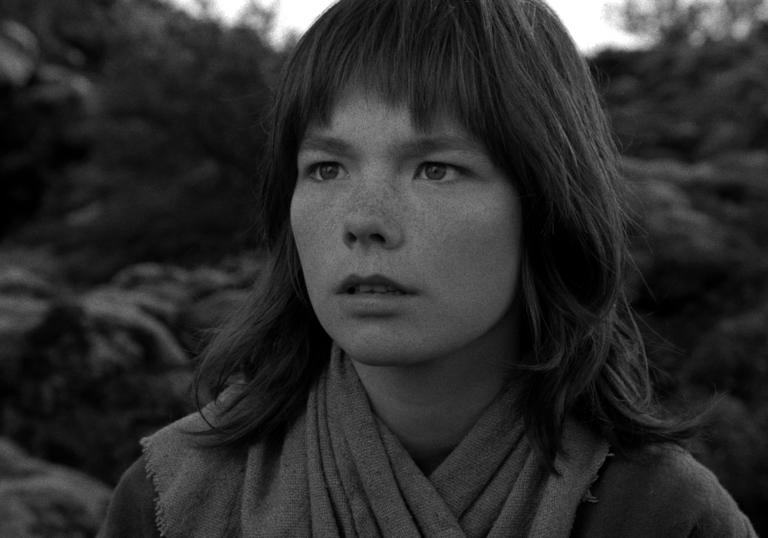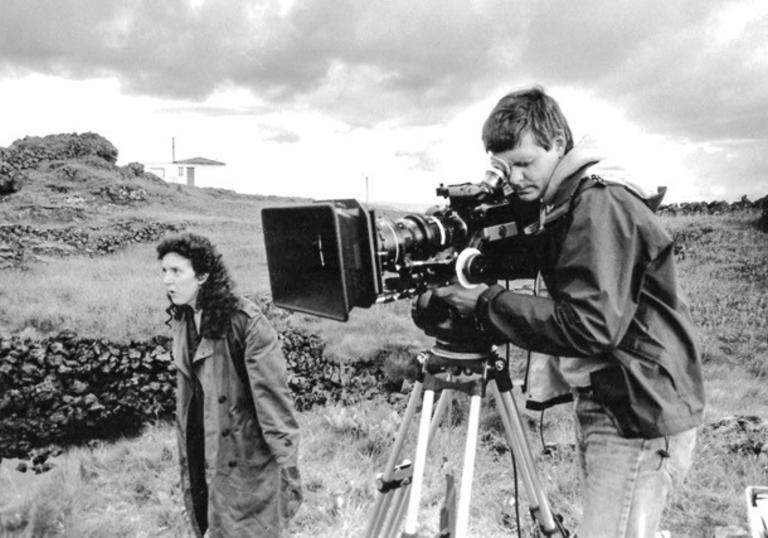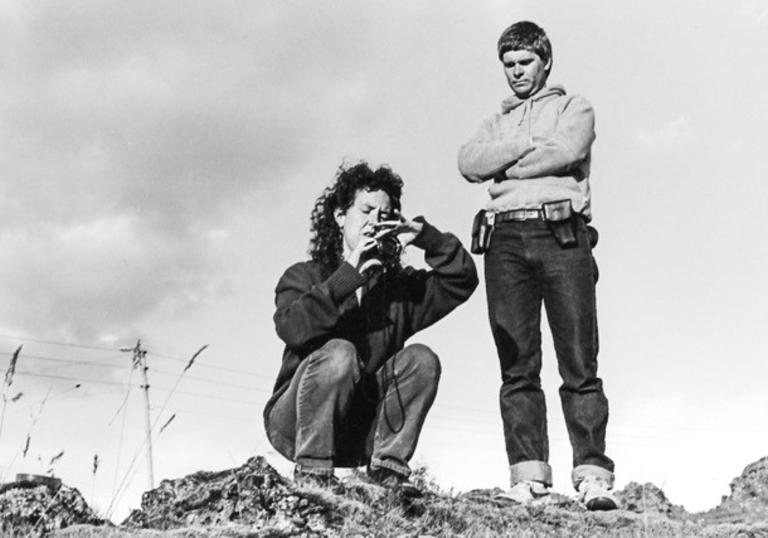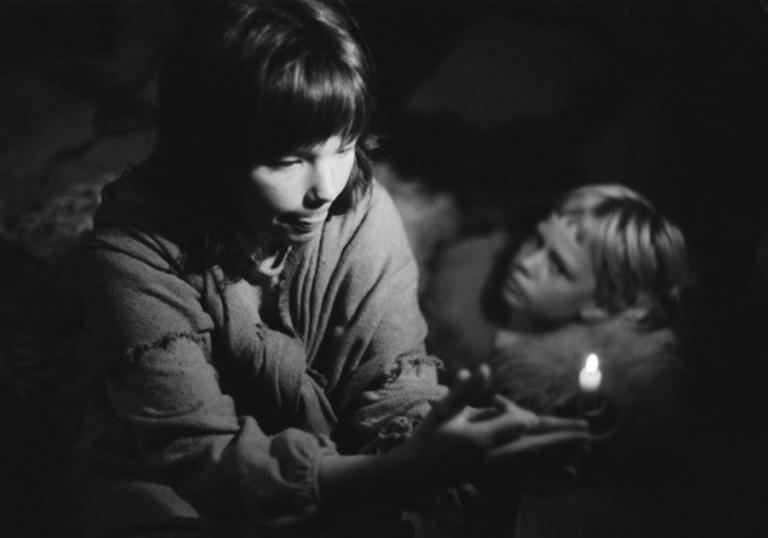The Juniper Tree, Nietzchka Keene’s visually stunning tale of witchcraft in the wilds of medieval Iceland and starring a young Björk, is available now on Cinema on Demand, after a brilliant restoration. 30 years after the cult film was first released, Barbican cinema curator Alex Davidson interviews cinematographer Randolph Sellars about filming in Iceland, the film’s reception and working with Björk.
The restoration of the film does full justice to your cinematography – it looks stunning. What fueled the decision to shoot in black and white?
When Nietzchka was considering me for the film she had already decided that she wanted to shoot in B&W due to the dark subject matter and its period setting. That is one of the elements that attracted me the most to the project - a chance to photograph a feature in the style of European masters such as Ingmar Bergman and Carl Dreyer, who were major influences.
In Conversation: Cinematographer Randolph Sellars on The Juniper Tree

Barbican cinema curator Alex Davidson interviews cinematographer Randolph Sellars about filming in Iceland, the film’s reception and working with Björk.

Image: Nietzchka directs while Randolph photographs a scene
Had you been to Iceland before shooting the film?
I had never been to Iceland before. In fact, this was my first trip outside of North America - so The Juniper Tree was quite an exciting adventure for me. I immediately fell in love with its people and the stark beauty of the grassy and rocky landscapes, devoid of trees. The northern summer light in Iceland was the most beautiful I had ever experienced. It was always low on the horizon, creating long shadows that are both beautiful and dramatic.
Where in Iceland was the film shot?
Quite a few of our exterior scenes were shot on private property outside of Hafnarfjörður, which is conveniently close to Reykjavík, were we were based. However, we did travel to many other locations along the south coast, as far as Vik, to get just the right background for a scene. One of my favourite scene locations was when Björk and her ‘ghost’ mother walk behind the famous waterfall at Seljalandsfoss. Gorgeous visual, but we had a heck of a time keeping the camera and lens dry with all the turbulent mist blowing around.
What was it like working with Björk?
When we made The Juniper Tree, Björk had never acted before and was little-known outside of Iceland. I was immediately impressed with the young 21-year-old’s natural acting ability. She was quite amazing to watch, but none of us knew she would later become so famous internationally. I remember her being very serious and focused on her acting work.
One of my favourite scene locations was when Björk and her ‘ghost’ mother walk behind the famous waterfall at Seljalandsfoss
She was quite friendly and easy-going to work with, but I can’t say that I got to know her very well on a personal level. To me, she seemed naturally introverted when not on camera and she had a newborn baby to attend to during breaks.

Image: Nietzchka adjusts a director’s viewfinder to preview a shot composition
Nietzchka Keene, who sadly passed away in 2004, showed such talent with this debut feature, writing, editing and directing this unique film. How did you meet and what was it like working with her?
I first met Nietzchka on the set of a student film that she made at UCLA [University of California, which has a renowned film school]. I was helping out as a camera assistant for a couple of days. I certainly miss Nietzchka both personally and professionally. She was probably the most intellectual and scholarly film director that I ever worked with. Although she always had a very clear artistic vision for what she wanted, she was a very generous collaborator.
The Juniper Tree was shot in 1986 but was released in 1990. Why was there a delay?
We shot the film in the summer of 1986. It was a very low budget, largely self-financed film. Nietzchka barely had enough money to complete the principal photography. She spent the next four years slowly editing her film as she saved enough money to pay for the remaining post-production. I always admired Nietzchka for being so persistent and fiercely independent. She gladly rejected any commercial influence to remain a more 'pure' artist.
I always admired Nietzchka for being so persistent and fiercely independent
How was The Juniper Tree received?
From what little I’ve heard, the few Icelandic people who saw The Juniper Tree when it first came out enjoyed the film and were proud of the significant Icelandic cast and crew contributions. After a respectful debut at the Sundance Film Festival, The Juniper Tree slid quietly into obscurity due to lack of a theatrical distributor and little publicity.
In the days before the internet, it was much more difficult for filmmakers to promote their own films using guerrilla marketing tactics. Until the recent restoration, the film was little known except by hardcore Björk fans who maintained a cult following via hard-to-find VHS and DVD videos.

Image: Björk makes shadow puppets
It’s now 30 years since the film was released. How do you feel about it, looking back, seeing your work again, in a new restoration?
I was thrilled when The Juniper Tree was selected for restoration. It means that a whole new audience will get a chance to see and appreciate it. The re-mastering was brilliantly done, and the film has never looked better.
I believe that Nietzchka was an artist who was ahead of her time by creating such a timeless and nuanced film whose plot feels accurate to its time period and yet very poignantly explores themes that express a strong feminist viewpoint.
Photos by Randolph Sellars.

